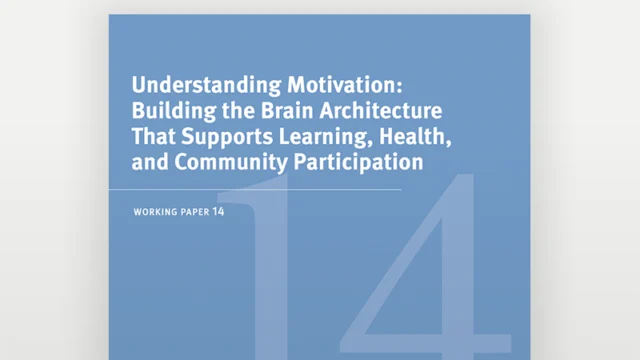Understanding Motivation: Building the Brain Architecture That Supports Learning, Health, and Community Participation

A healthy, engaged community depends on people achieving to the best of their potential, contributing actively to the economy and public well-being, and helping the next generation to thrive. A complex set of intertwined social and biological factors influences people’s motivation to participate actively and productively in schools, jobs, and communities–and to persevere in the face of setbacks.
To unlock this puzzle and ensure that all people have the opportunity to develop motivation to learn, improve skills, and make healthy choices, it would be helpful to understand the underlying mechanisms in the brain that develop in childhood and build the foundation for later complex behavior.
This Working Paper from the National Scientific Council on the Developing Child explains the science behind motivation–the “wanting” system and the “liking” system–as well as how those systems develop, and how that development can be disrupted. It also dives into the implications of the science for parents, caregivers, and teachers, as well as policy and public systems.
Suggested citation: National Scientific Council on the Developing Child (2018). Understanding Motivation: Building the Brain Architecture That Supports Learning, Health, and Community Participation Working Paper No. 14. Retrieved from www.developingchild.harvard.edu.